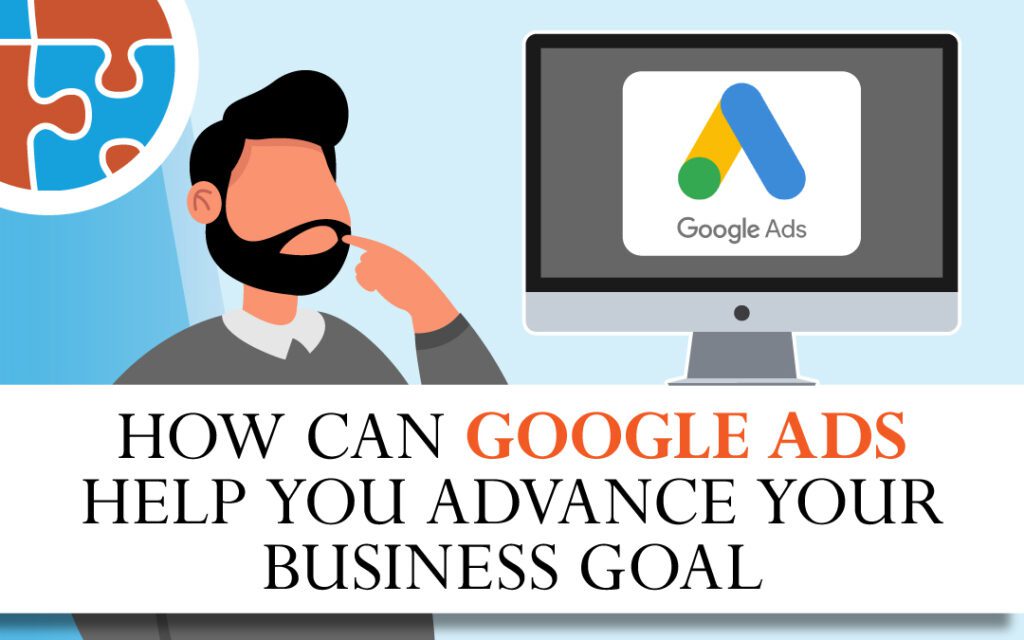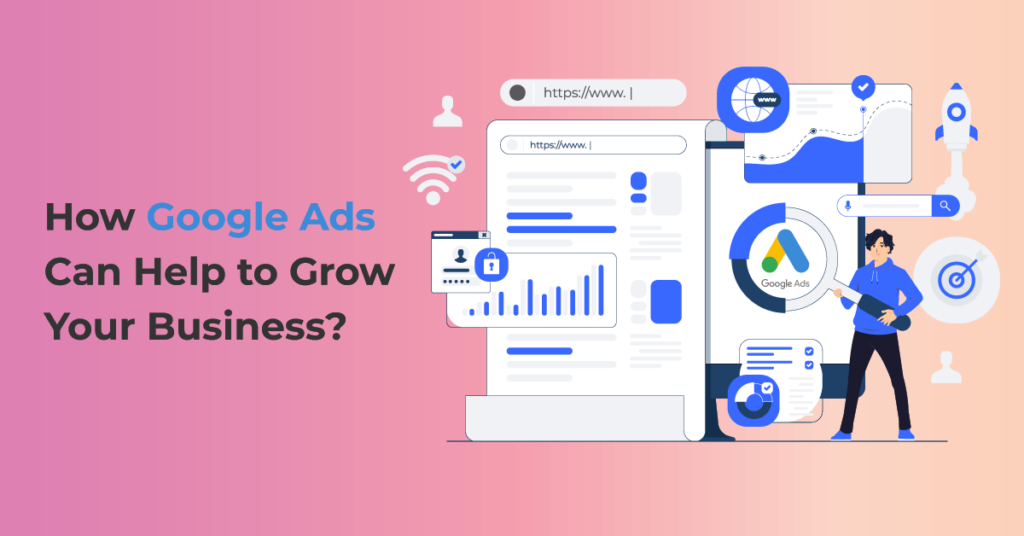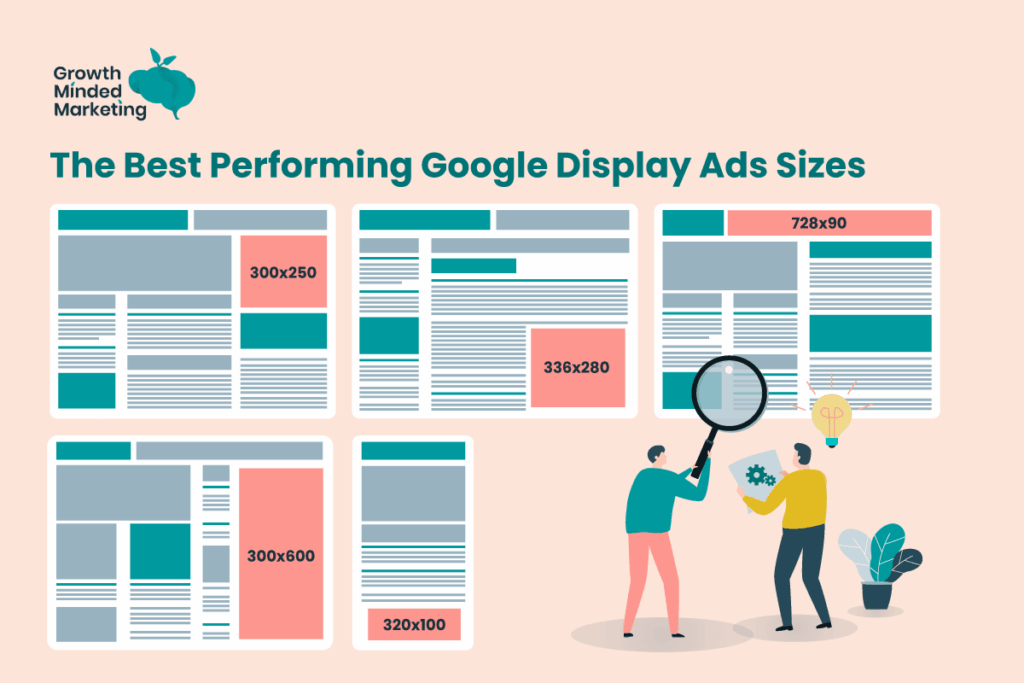How does Google Ads help a business

In the realm of business, reaching potential customers, boosting sales, and building a brand are vital objectives. However, achieving these goals effectively isn’t always easy, especially for small and medium-sized businesses. This is precisely why Google Ads emerged and became an indispensable tool. So, how does Google Ads help a business? It’s more than just a simple advertising channel; it’s a comprehensive solution enabling businesses to achieve their objectives quickly and efficiently. To further Rentads answer the question of how does Google Ads help a business, let’s explore the key benefits this platform offers, empowering businesses to break through the market.
How does Google Ads help a business

Google Ads is an advertising tool, a strategic partner that helps your business grow sustainably. From reaching the right customers, increasing sales, to building brands and leveraging data, Google Ads provides a holistic solution for you to thrive in the digital marketplace.
Reach potential customers
The success of a marketing campaign heavily relies on the ability to reach the right target audience. With Google Ads, you no longer need to cast a wide, indiscriminate net; instead, you can precisely connect with those who have a need. This tool allows you to select customers based on various criteria such as search keywords, geographic location, age, gender, interests, and online behavior. This ensures that your advertising message is displayed to individuals genuinely interested in your products or services.
One of the greatest advantages of Google Ads is its ability to reach customers at the exact moment they are searching for information or making a purchase decision. When a user types a keyword related to your product, they have already expressed a clear need. Your advertisement appearing at that precise moment is akin to offering a solution to their problem, thereby increasing conversion potential.
Increasing Sales and Profit
This platform not only helps you attract significant traffic but also focuses on converting those visits into specific actions, such as purchases, contact form submissions, or newsletter sign-ups. Google’s conversion tracking tools allow you to accurately measure the effectiveness of each campaign, enabling optimization for the best results at the lowest cost.
Google Ads operates on an auction model, where you pay only when a user clicks on your ad (CPC – Cost Per Click). This allows businesses to control their budget tightly. Furthermore, with detailed reporting tools, you can easily calculate the ROI of each campaign, understand which investments yield the highest profits, and adjust your strategy accordingly.
Building brand awareness
When your ads consistently appear in the top positions on search results, users will repeatedly see your brand name. This creates a strong impression of professionalism and credibility. Over time, your brand name becomes familiar and memorable, even if users haven’t clicked on the ad. Beyond search ads, Google Ads also offers other formats like display ads (Google Display Network) and video ads (YouTube Ads). These formats help you reach customers across millions of websites, apps, and YouTube channels, thereby amplifying your brand presence and fostering a consistent brand narrative across all platforms.
Leveraging Data for Strategic Optimization
Through Google Ads reports, you can discover what customers are searching for, how they interact with your ads, which keywords are most effective, and in which regions conversions are highest. This information helps you gain a deeper understanding of customer needs and behaviors, leading to the creation of more relevant products, services, and content. Instead of making decisions based on gut feelings, Google Ads empowers you to use data to adjust budgets, change keywords, improve ad copy, and optimize landing pages. Every change is measured and evaluated for its effectiveness, guiding you toward your goals and maximizing profits.
Popular Google Ads Formats
The Google Ads ecosystem is vast and diverse, extending far beyond search results. To effectively reach users, Google has developed various ad formats, each suited for specific marketing objectives. Understanding and choosing the right format is crucial for optimizing your budget and achieving maximum effectiveness.

Classification by Objective
Search Ads are the most common format, appearing as text ads on Google’s search results pages. This type is ideal for reaching users with clear intent. When someone searches for keywords related to your product or service, your ad appears immediately, directing them to your landing page and driving conversions.
Display Ads, on the other hand, focus on reaching users as they browse the web, read news, or watch videos on millions of websites within the Google Display Network. These ads typically appear as banners or images, aiming to enhance brand awareness and retargeting past website visitors, keeping your products/services top-of-mind.
Shopping Ads are a specialized format for e-commerce businesses. Instead of just text, they showcase product images, names, and prices directly on the search results page, allowing users to easily compare options and make purchasing decisions. The goal of Shopping Ads is to directly drive sales and attract high-quality traffic to your online store.
Video Ads are displayed on YouTube and Google’s video partner sites. With their ability to convey messages vividly and engagingly, video ads are highly effective for storytelling, creating strong impressions, and increasing brand recognition.
App Campaigns are automated campaigns designed to promote your mobile app across various Google platforms. By providing basic information, Google Ads automatically optimizes to show your ads to individuals most likely to download your app.
Advantages and Disadvantages of Each Format
Search Ads have the significant advantage of reaching users with immediate intent, leading to high conversion rates because users have clearly signaled their buying intention through their search queries. However, a drawback is that the Cost Per Click (CPC) can be high due to intense competition. Without proper optimization, you might spend a significant budget without achieving desired results.
Display Ads excel at reaching a broad audience and building brand awareness at a lower cost compared to Search Ads. They are highly effective for remarketing, helping you maintain contact with potential customers. The weakness of Display Ads is that Click-Through Rates (CTR) and conversion rates are often lower. Users may not have immediate purchase intent when seeing banner ads, thus direct sales effectiveness is not as high.
Shopping Ads offer the advantage of a visual experience and providing comprehensive product information directly on the search results page, attracting high-quality potential customers. This leads to high conversion rates. However, a disadvantage is that they are only suitable for e-commerce businesses and require a more complex setup, including creating and managing a Google Merchant Center account.
Video Ads have the strength of conveying emotion and narrative, helping users remember a brand longer. They are an ideal tool for brand building. Despite this, the drawback of video ads is the high cost of video production and potentially more challenging direct conversion measurement compared to other formats.
App Campaigns stand out with their advantage of high automation, saving you time and effort in optimization. Google Ads automatically seeks out and delivers ads to individuals most likely to download your app, yielding high results. A disadvantage is that you have less control over ad placement and appearance, as the platform automates most processes.
Contact Info
Are you in need of Facebook advertising or need to rent a quality Facebook advertising account? Don’t worry! Rentads is a unit specializing in providing reputable Facebook accounts, as well as direct advertising support. Provides all types of advertising accounts such as google ads agency account for rent to help you reach and create fast conversions.
Frequently Asked Questions
While a professional website is ideal, it’s not always mandatory. You can still run ads to attract calls, messages, or customers to your physical store. However, if your goal is online sales or collecting customer information, a well-optimized landing page will help increase conversion rates.
Google Ads and SEO are two complementary tools that cannot replace each other. Google Ads delivers quick results, helping you appear instantly on search engine results pages. Meanwhile, SEO is a long-term strategy focused on improving a website’s organic ranking. Combining both will help you dominate both paid ad placements and organic positions, thereby increasing reach and overall marketing effectiveness.